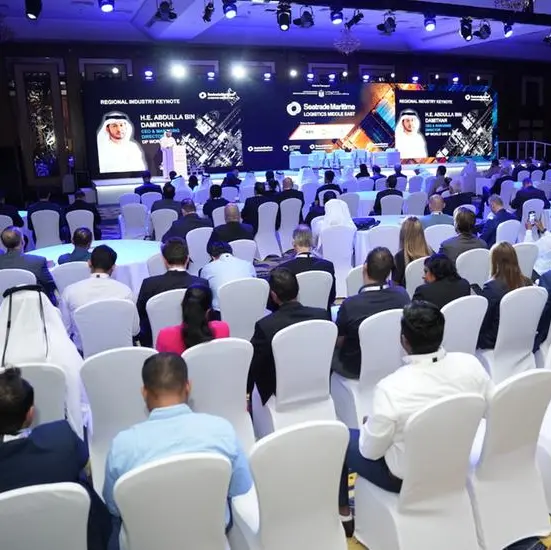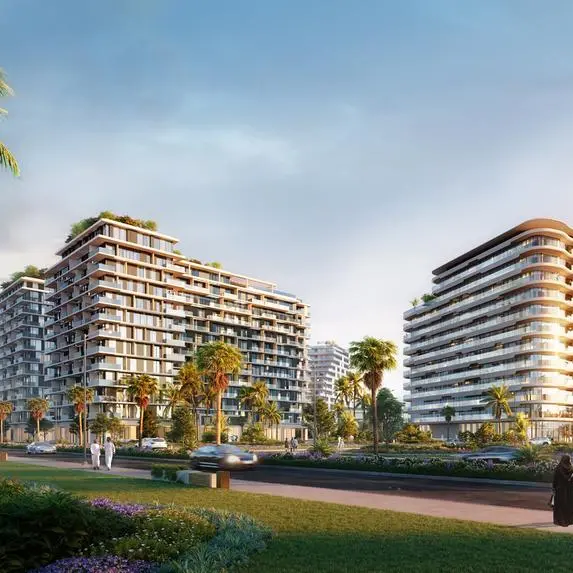Fitch Ratings - London: Fitch Ratings has affirmed UAE-based First Abu Dhabi Bank P.J.S.C.'s (FAB) Long-Term Issuer Default Rating (IDR) at 'AA-' with a Stable Outlook and Viability Rating (VR) at 'a-'.
KEY RATING DRIVERS
IDRS, SUPPORT RATING (SR) AND SUPPORT RATING FLOOR (SRF)
FAB's IDRs reflect an extremely high probability of support available to the bank from both the UAE (AA-/Stable) and Abu Dhabi (AA/Stable) authorities, as reflected in its 'AA-' SRF.
Fitch's view of support factors in the sovereign's strong ability to support the banking system, underpinned by its solid net external asset position, still strong fiscal metrics and recurring hydrocarbon revenues. It also reflects the authorities' very strong, timely and predictable record of supporting its domestic banks and strategic ownership of a number of banks, including FAB (38% owned by Mubadala Investment Company, an Abu Dhabi sovereign wealth fund).
FAB's 'AA-' SRF is one notch above the Abu Dhabi domestic systemically important banks' (D-SIB) SRF of 'A+', reflecting the bank's flagship status in the UAE, and in Abu Dhabi in particular. Abu Dhabi's D-SIB SRF is one notch higher than that of other UAE banks given Abu Dhabi's superior financial flexibility.
SPV AND DEBT RATINGS
FAB's senior unsecured programmes, the trust certificate issuance programme of FAB Sukuk Company Ltd and the notes issued under these programmes, are rated in line with FAB's respective Long- and Short-Term IDRs, reflecting Fitch's view that the likelihood of default on any senior unsecured obligation is the same as that of the bank.
VR
FAB's VR is underpinned by the bank's very strong domestic franchise (end-3Q21: 24% of sector loans, 28% of deposits) and funding and liquidity profile. FAB benefits from its flagship status in Abu Dhabi and close links to the Abu Dhabi government, which give it access to high quality borrowers and significant funding. The affirmation of FAB's VR reflects our view that there is still headroom at the 'a-' level, particularly in view of ordinary support from the authorities. Nevertheless, downside risks remain given the bank's only adequate core capital ratio.
We believe that the challenges to the UAE economy from the coronavirus pandemic have subsided sufficiently to remove the negative outlook on the UAE operating environment score. Government support measures, higher oil prices and eased restrictions have resulted in increasing economic activity and improved economic growth prospects (Fitch UAE GDP growth forecast: 1.8% for 2021 (non-oil: 3.5%); 5.8% (3.7%) for 2022). These factors should be supportive of UAE banks' operations in the short to medium term.
The quality of FAB's loan book stabilised in 9M21 following moderate deterioration in 2020 due to the impacts of the pandemic. Reported Stage 3 loans (including interest in suspense) accounted for 3.8% of gross loans at end-3Q21 (end-2020: 3.8%). Fitch calculates that impaired loans including loans purchased or originated credit impaired would have been a higher 5.1% of gross loans at end-3Q21 (3.9%; net of interest in suspense), up from 5.0% at end-2020 (3.9%) and 3.9% at end-2019 (3.2%). Stage 2 loans improved to 4.3% of gross loans at end-3Q21, from 5.0% at end-2020, reflecting the more benign economic outlook. Deferred payments have fallen and were less than 1% of total loans at end-3Q21.
The share of loans in assets is fairly low (end-3Q21: 41%), and our view of the bank's overall asset quality is underpinned by a high share of low-risk exposures to the government and government-related entities (30% of loans) and good-quality Abu Dhabi corporates. Nevertheless, single-name risk in the loan book is high, as for peers, and exposure to the pressured real estate and construction sectors is material (25% of gross loans at end-3Q21). Non-loan exposures are primarily made up of highly rated investment securities or liquidity placed at central banks, albeit higher-yielding investments have increased.
The bank's operating profit-to-risk-weighted assets (RWA) improved to 2.1% in 9M21, from 2.0% in 2020, on the back of high non-interest income growth from strong trading performance. FAB's net interest margin (9M21: 1.7%) remains supressed by low interest rates, but we expect this to gradually improve with rising rates. Loan impairment charges remained moderate in 9M21 (17% of pre-impairment operating profit) and we do not expect to large increases, given the improved economic outlook. FAB's cost efficiency remains strong, underpinned by economies of scale, and should strengthen as full integration costs are realised.
FAB's Common Equity Tier (CET1) ratio (end-3Q21: 13.0%) fell from 13.3% at end-2020, primarily due to regulatory changes in RWA and the acquisition of Bank Audi Egypt. We consider the CET1 ratio as only adequate relative to its risk profile, given high credit concentrations and low-risk weighting on government exposures. Nevertheless, we expect capital ratios to gradually improve with internal capital generation and RWA optimisation. The Tier 1 ratio of 14.8% is supported by AED8 billion Tier 1 notes issued to the Abu Dhabi government. Our assessment of capitalisation also factors in ordinary support from the Abu Dhabi authorities, in case of need, given FAB's flagship status.
FAB's robust funding and liquidity profile is a rating strength. Customer deposits represented 68% of total funding at end-3Q21 and the bank's loans/deposits ratio of 75% outperforms peers. State and public-sector companies maintain large accounts with the bank (end-3Q21: 44% of total deposits) underpinning the bank's funding base. Low-cost current and savings accounts made up 45% of total deposits, further supporting FAB's cost of funding (0.8% in 9M21; 1.0% in 2020). Wholesale funding is well diversified by sources and tenor.
The bank prudently maintains significant liquidity buffers equal to more than half of total customer deposits at end-3Q21 and fully covering short-term wholesale funding repayments up to one year.
RATING SENSITIVITIES
Factors that could, individually or collectively, lead to negative rating action/downgrade:
IDRS, SR AND SRF
FAB's IDRs and Outlook are sensitive to a change in Fitch's view of the ability and propensity of the UAE and Abu Dhabi authorities to support the banking system or the bank. Any negative rating action on the UAE or Abu Dhabi or a negative change in Fitch's assessment of the authorities' ability or propensity to provide support would result in a downward revision of the SRF and downgrade of FAB's IDRs. However, this is not currently anticipated, given the Stable Outlook on both sovereign ratings.
SPV AND DEBT RATINGS
Any downgrade of FAB's IDRs would lead to a corresponding change in the ratings of the bank's unsecured bond and sukuk programmes, the senior notes rated under these programmes, as well as other senior debt.
VR
FAB's VR is primarily sensitive to our assessment of the bank's capitalisation. FAB's VR would likely be downgraded if its CET1 ratio fell below 13% on a sustained basis or if we believed capitalisation was no longer commensurate with its risk profile. In addition, the VR would come under pressure if profitability did not improve as expected and operating profit-to-RWA fell below 2.0% on a sustained basis.
The VR would come under pressure if there were signs that the bank's risk appetite had increased, in particular with materially higher exposure to speculative investments or riskier markets.
Factors that could, individually or collectively, lead to positive rating action/upgrade:
IDRS, SR AND SRF
Given our existing view of the high creditworthiness of the UAE and Abu Dhabi and high propensity to support the banking system and the bank, positive rating action is unlikely.
SPV AND DEBT RATINGS
Any upgrade of FAB's IDRs would lead to a corresponding change in the ratings of the bank's unsecured bond and sukuk programmes, the senior notes rated under these programmes, as well as other senior debt.
VR
Upside to the VR is limited given its current high level relative to the operating environment. A VR upgrade would require improvement in FAB's operating environment combined with significant improvements in the bank's CET1 ratio, operating profitability and asset quality.
BEST/WORST CASE RATING SCENARIO
International scale credit ratings of Financial Institutions and Covered Bond issuers have a best-case rating upgrade scenario (defined as the 99th percentile of rating transitions, measured in a positive direction) of three notches over a three-year rating horizon; and a worst-case rating downgrade scenario (defined as the 99th percentile of rating transitions, measured in a negative direction) of four notches over three years. The complete span of best- and worst-case scenario credit ratings for all rating categories ranges from 'AAA' to 'D'. Best- and worst-case scenario credit ratings are based on historical performance. For more information about the methodology used to determine sector-specific best- and worst-case scenario credit ratings, visit https://www.fitchratings.com/site/re/10111579
REFERENCES FOR SUBSTANTIALLY MATERIAL SOURCE CITED AS KEY DRIVER OF RATING
The principal sources of information used in the analysis are described in the Applicable Criteria.
PUBLIC RATINGS WITH CREDIT LINKAGE TO OTHER RATINGS
FAB's IDRs, SR and SRF reflect an extremely high probability of support available to the bank from the UAE and Abu Dhabi authorities, if needed.
ESG CONSIDERATIONS
Unless otherwise disclosed in this section, the highest level of ESG credit relevance is a score of '3'. This means ESG issues are credit-neutral or have only a minimal credit impact on the entity, either due to their nature or the way in which they are being managed by the entity. For more information on Fitch's ESG Relevance Scores, visit www.fitchratings.com/esg
-Ends-
Link to Rating Actions: Rating Actions
Media Relations: Louisa Williams,
London, Tel: +44 20 3530 2452
Email:louisa.williams@thefitchgroup.com
Additional information is available on www.fitchratings.com
© Press Release 2021
Disclaimer: The contents of this press release was provided from an external third party provider. This website is not responsible for, and does not control, such external content. This content is provided on an “as is” and “as available” basis and has not been edited in any way. Neither this website nor our affiliates guarantee the accuracy of or endorse the views or opinions expressed in this press release.
The press release is provided for informational purposes only. The content does not provide tax, legal or investment advice or opinion regarding the suitability, value or profitability of any particular security, portfolio or investment strategy. Neither this website nor our affiliates shall be liable for any errors or inaccuracies in the content, or for any actions taken by you in reliance thereon. You expressly agree that your use of the information within this article is at your sole risk.
To the fullest extent permitted by applicable law, this website, its parent company, its subsidiaries, its affiliates and the respective shareholders, directors, officers, employees, agents, advertisers, content providers and licensors will not be liable (jointly or severally) to you for any direct, indirect, consequential, special, incidental, punitive or exemplary damages, including without limitation, lost profits, lost savings and lost revenues, whether in negligence, tort, contract or any other theory of liability, even if the parties have been advised of the possibility or could have foreseen any such damages.










